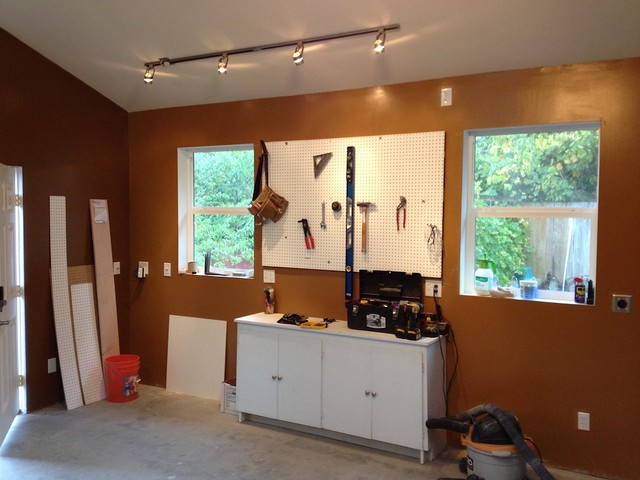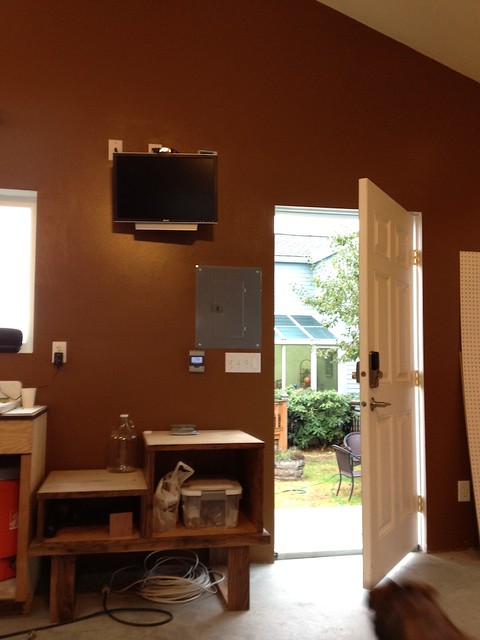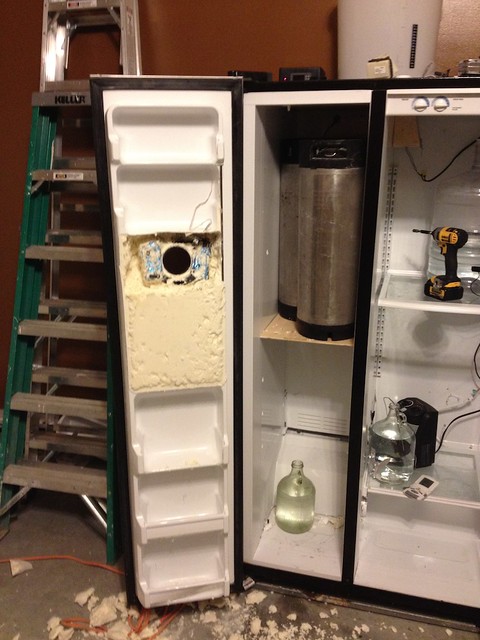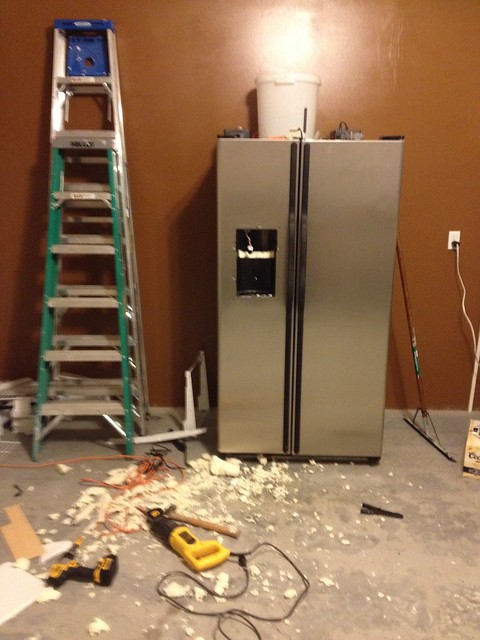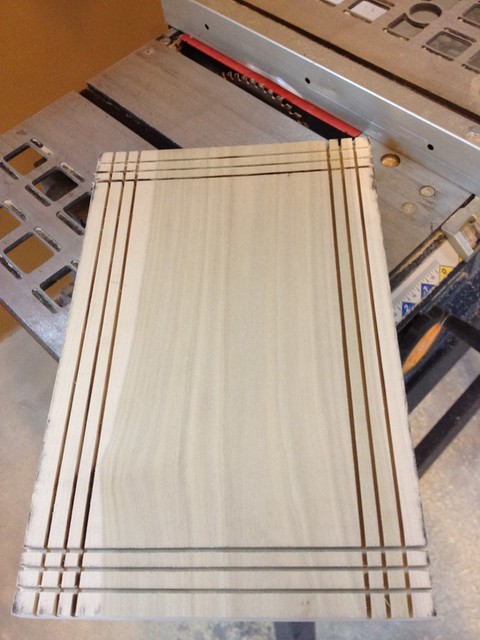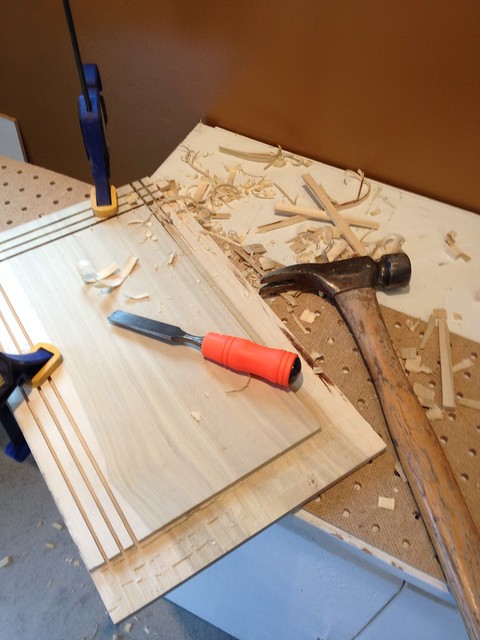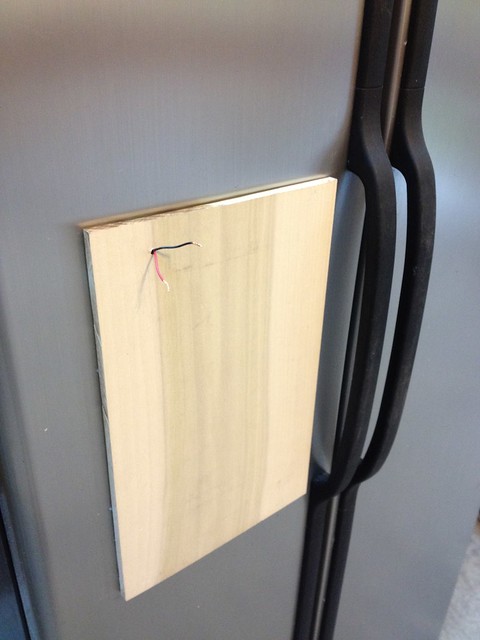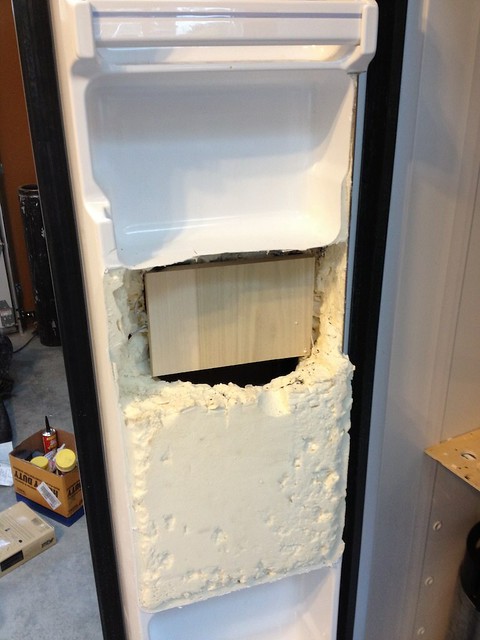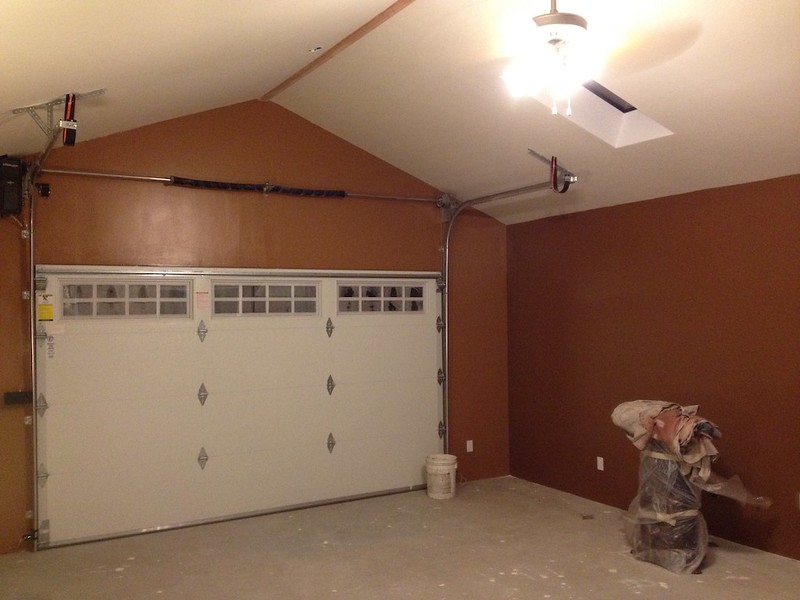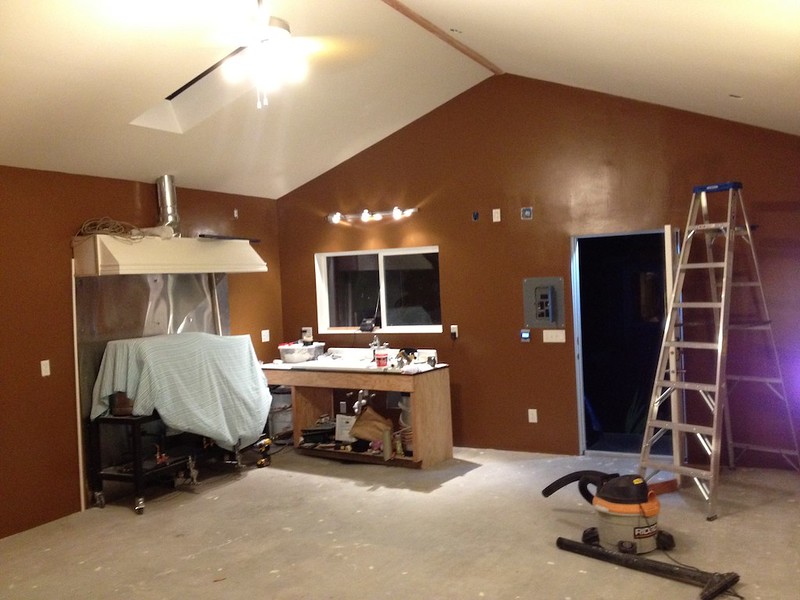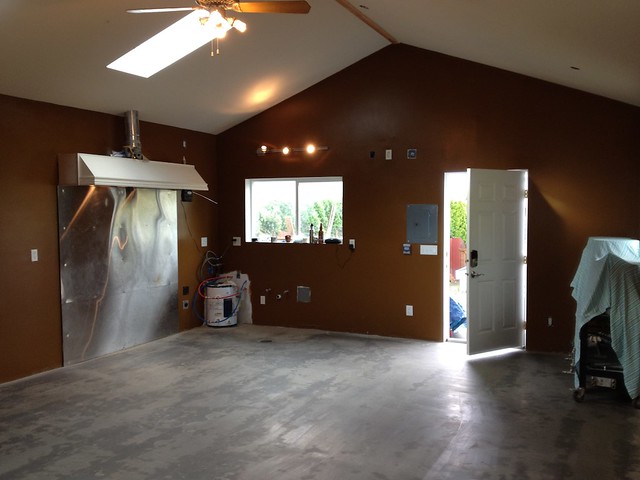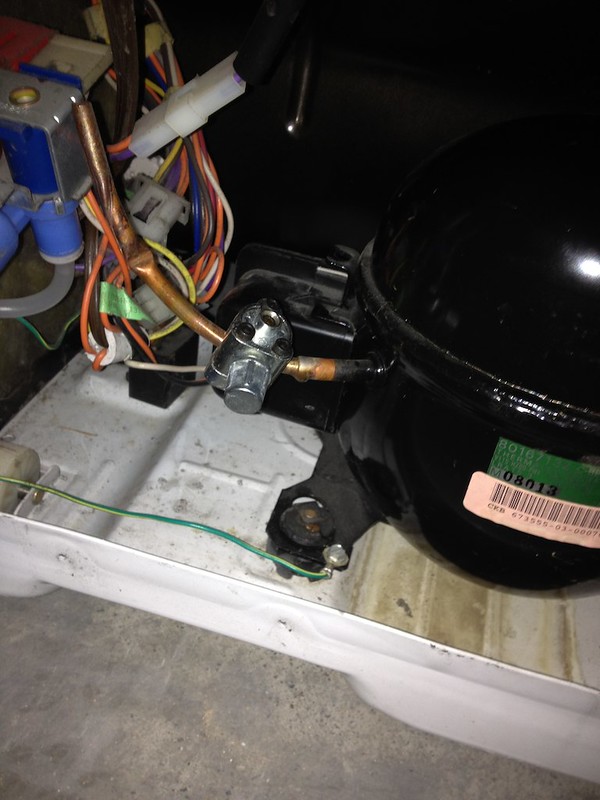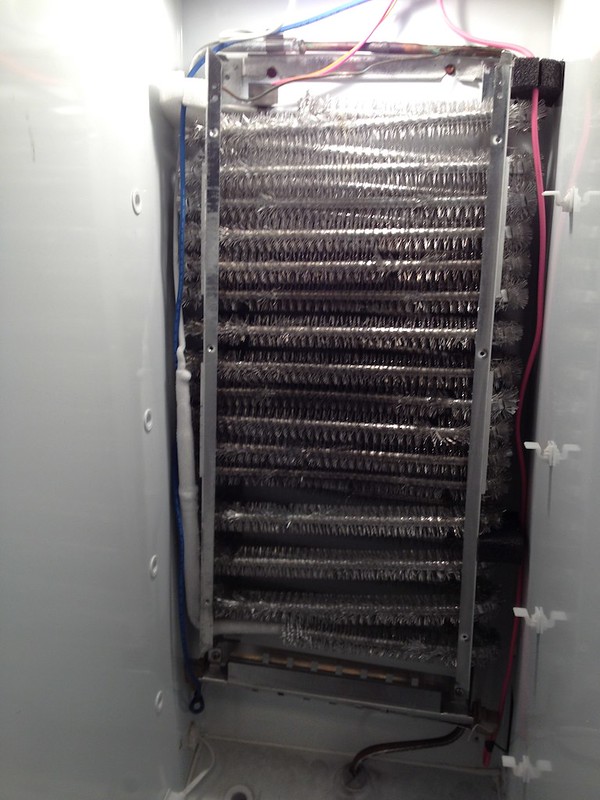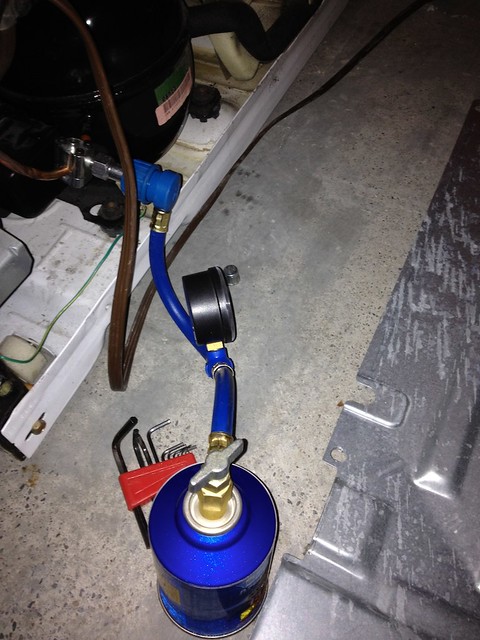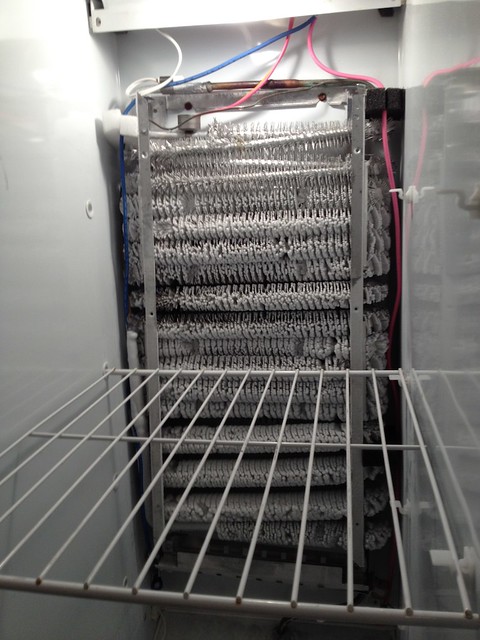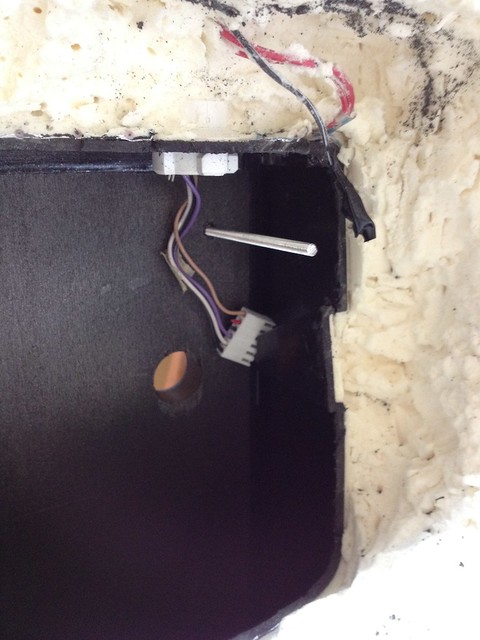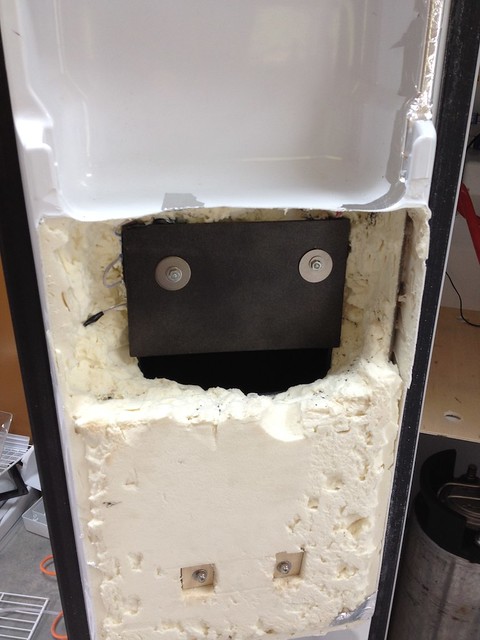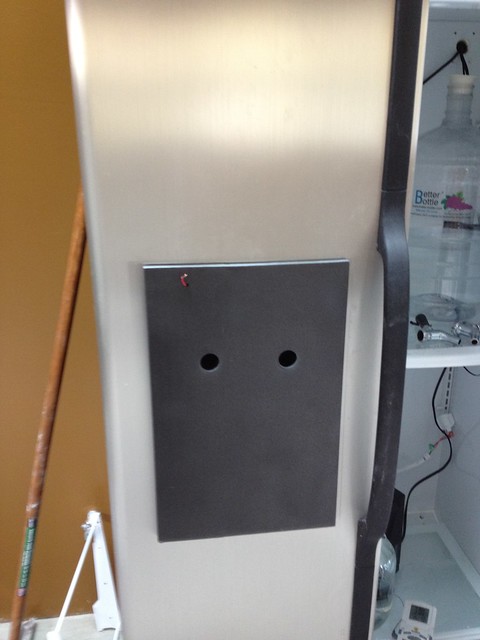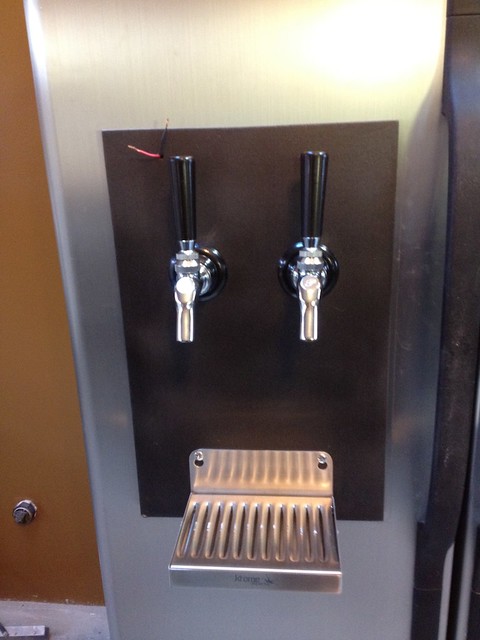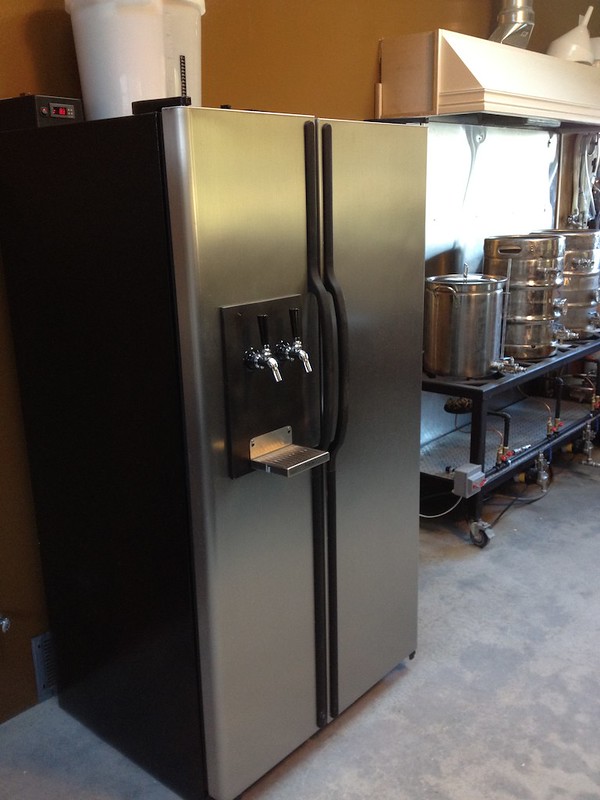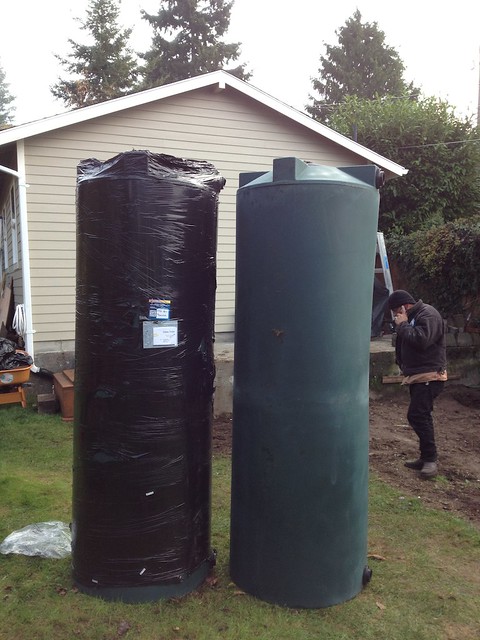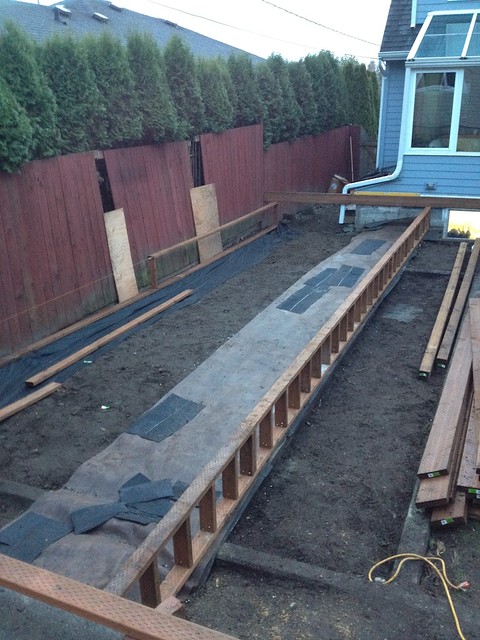As mentioned above, I've turned my attention to my fermentation setup in the new garage. I've contemplated a lot of options from a purpose built chamber, to multiple chest freezers, to an awesome two door commercial fridge I almost bought (it was a killer deal). Ultimately I settled on a large side by side fridge/freezer which I will convert into a dual zone fermentation chamber. The laggering side (freezer) will do double duty and be able to serve from a keg or two, making sure I can keep something on tap in the garage. Most of the beers will still be on tap in the house from a coffin keezer I plan to build in there. Once both of those projects are done, I'll pass on my 2 tap mini-fridge kegerator (currently serving the house) to a friend who is just getting into kegging.
I did fairly well on craigslist, and picked up this nice GE stainless steel 25cf side by side for $200. It's a little more than I had planned to spend, but it is way nicer than I had planned on getting too.
Poor fridge, you have no idea what is about to happen to you.
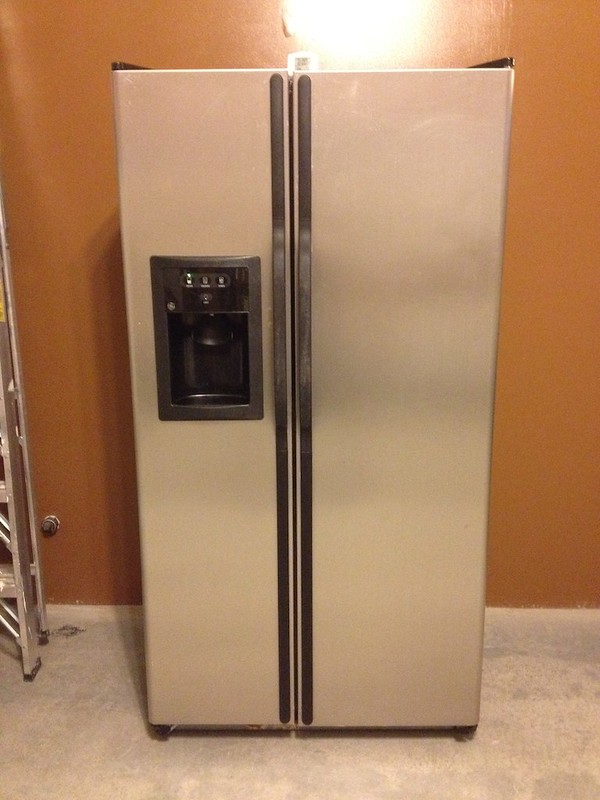
Inside with most shelves removed, temperature testing (it works great)
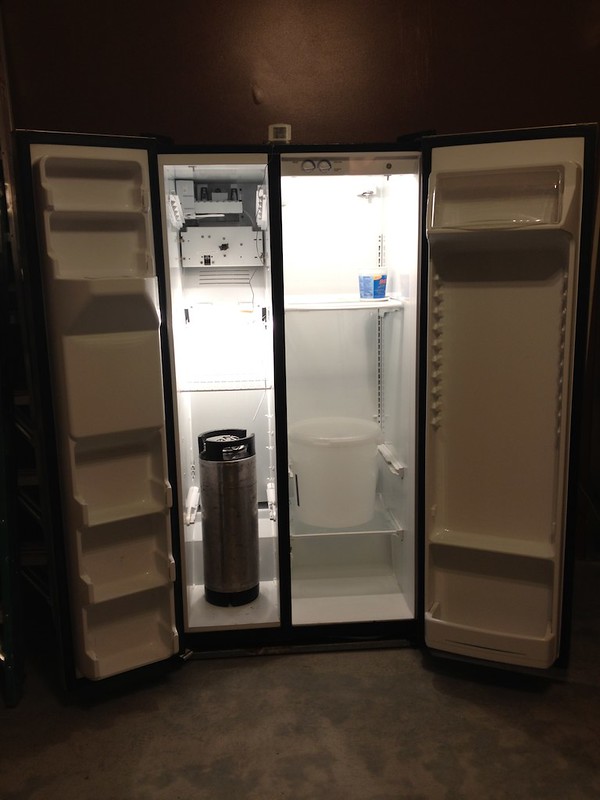
Fridge guts
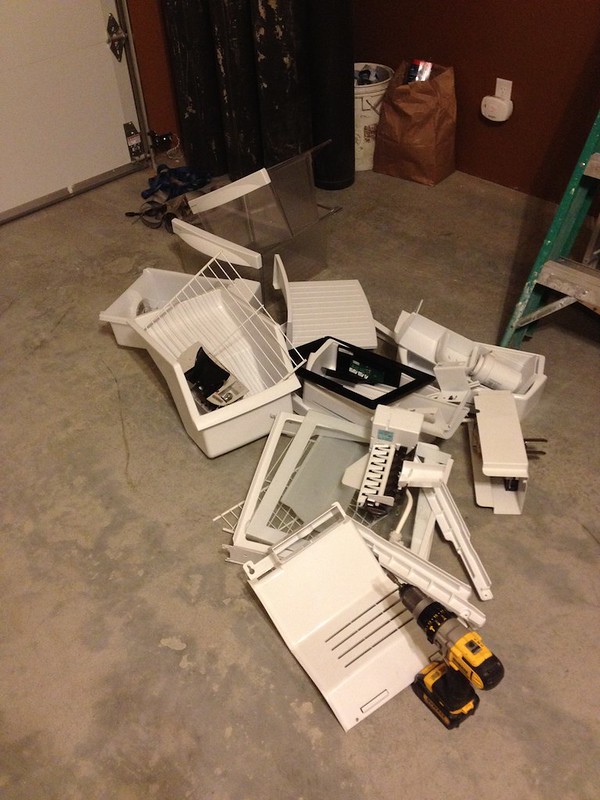
Based on my initial tests with empty bottles, I am confident I can fit 4x 6 gallon better bottles in the fridge side. I believe I could also fit one 14 gallon conical and two better bottles in that side in the future. The freezer will take two better bottles or at least 2 corny kegs. I won't know for sure until I get more of the door disassembled, but I *think* I can fit three.
Wiring for temp controllers and a dispensing setup in the freezer door start tomorrow. It'll wind up similar to this one, though I'm going to keep my temp controllers in separate boxes for now, as I intend to control the chamber with a BCS-462 in the futre, so I don't want the holes.
I did fairly well on craigslist, and picked up this nice GE stainless steel 25cf side by side for $200. It's a little more than I had planned to spend, but it is way nicer than I had planned on getting too.
Poor fridge, you have no idea what is about to happen to you.

Inside with most shelves removed, temperature testing (it works great)

Fridge guts

Based on my initial tests with empty bottles, I am confident I can fit 4x 6 gallon better bottles in the fridge side. I believe I could also fit one 14 gallon conical and two better bottles in that side in the future. The freezer will take two better bottles or at least 2 corny kegs. I won't know for sure until I get more of the door disassembled, but I *think* I can fit three.
Wiring for temp controllers and a dispensing setup in the freezer door start tomorrow. It'll wind up similar to this one, though I'm going to keep my temp controllers in separate boxes for now, as I intend to control the chamber with a BCS-462 in the futre, so I don't want the holes.


